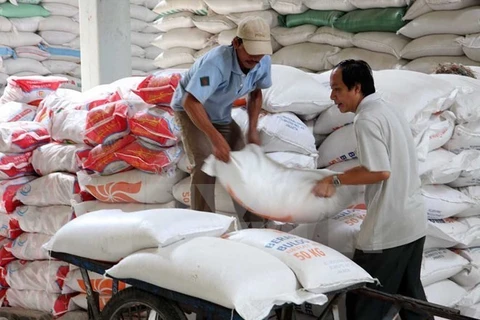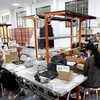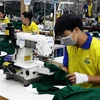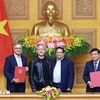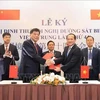Hanoi (VNA) – State and local rice firms should pay attention to developing domestic rice markets, as they have a great potential in the overall selling of rice, said experts.
Vietnam produces 20 to 21 million tonnes of rice each year. Of this rice, 8 to 9 million tonnes are annually exported, based upon signed contracts. The remaining rice is purchased by domestic consumers, according to the Vietnam Food Association.
However, rice enterprises have not paid attention to domestic rice markets, where there is a high demand, choosing instead to focus on exports.
In 2008, two centres for distributing rice for local consumption were built in HCM City and Can Tho city to stabilise domestic rice prices. Also, several retail shops selling rice were opened for local consumers.
But these shops faced many difficulties in selling rice and even had losses, the association said, because enterprises trading rice on the domestic market must pay a 5 percent value added tax (VAT), resulting in the prices for their rice being higher than rice sold by household businesses that do not pay VAT.
Therefore, to assure there being profits in selling rice on the local market, rice firms have had to sell high-grade rice at higher prices to those consumers with larger incomes.
In addition, firms must compete with household businesses in services involved in selling rice, the association said. The household businesses have had flexibility in distributing rice and provided a high level of services, even to rural and remote areas, while firms have distribution systems in both cities and towns.
Truong Thanh Phong, former chairman of the association, said the association had repeatedly proposed to the Government that they abolish the VAT paid by rice firms. But the Ministry of Finance has objected, causing rice firms to ignore local rice markets.
Meanwhile, in rural areas, people continue to hold back rice for their own consumption after harvesting, while selling the remaining rice to enterprises, he said.
He hopes that in the coming 5 to 10 years, living standards in rural areas will have improved and small rice mills will be closed. The people in rural areas might then sell all their rice after harvesting, and then purchase rice for daily use. If this occurs, local rice markets will have more opportunities to further develop, he said.
For the development of local rice markets, the VAT must be abolished and convenient and flexible distribution systems from rice enterprises must be put in place, he said.-VNA


